TCEQ
An Idea Worthy of Our Consideration
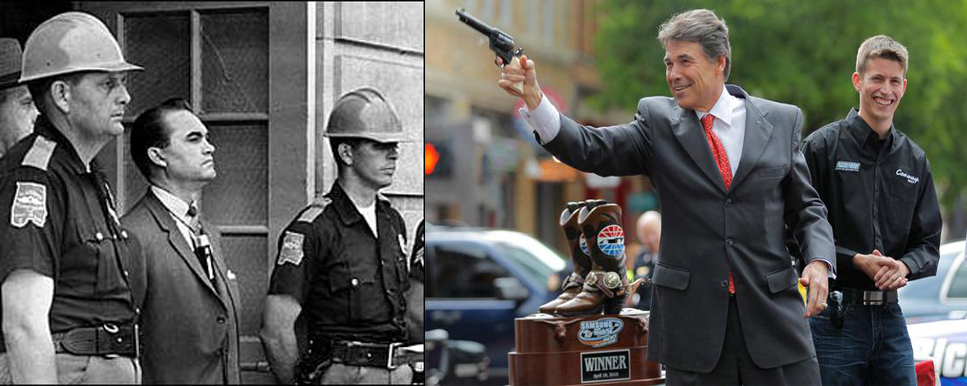 Under current law, EPA can designate states to enforce federal environmental laws if they, in fact, actually enforce the law and run competent programs. Once given by the EPA, rarely is this power taken away from a state.
Under current law, EPA can designate states to enforce federal environmental laws if they, in fact, actually enforce the law and run competent programs. Once given by the EPA, rarely is this power taken away from a state.
But when a state doesn't do a good job of enforcing the law or runs a program ineptly, the EPA considers taking back responsibility.That's happened recently in Iowa with the enforcement of the Clean Water Act. The Iowa Department of Natural Resources had been heavily criticized by state environmental groups for allowing huge CAFOs – Concentrated Animal and Feeding Operations to pollute the state's waterways. Beginning five years ago, they petitioned the EPA to take direct control of enforcing the Clean Water Act in Iowa. Their petition prompted an EPA investigation. The results confirmed the criticisms of the environmentalists and now the EPA is seriously thinking about stepping in.
Texas environmental groups should take note.
There is plenty of evidence on the public record to suggest Governor Perry and his Texas Commission on Environmental Quality are engaged in an active campaign of "nullification" of federal environmental laws just as Alabama Governor George Wallace was intent on negating federal civil rights legislation and rulings in the 1960's. But instead of standing in the schoolhouse door, Perry is using the world's second largest environmental agency to slow and obfuscate enforcement of the law in the name of his own over-the-top pro-industry agenda. The penalty for this kind of behavior 50 years ago was having the National Guard and Federal Marshals come into Alabama and make sure the law was followed. All we need in 2012 is for EPA to re-establish competent control over half a dozen federal environmental laws.
And if you don't think our Governor and his environmental agency are so nefarious as to construct a strategy to frustrate federal environmental law enforcement, what about stripping them of their responsibilities strictly because of their incompetence at administrating the federal programs. Take the last DFW air plan.…please. TCEQ kept insisting that the turnover of new cars on the road would almost singe-handedly produce the cleanest air in 25 years in North Texas. Not only was that forecast epically wrong – and off by a larger margin than the TCEQ's last clean air plan failure in 2007 – the plan actually left the region with dirtier air than when it began. It was bad science. Call this incompetence or call it incompetence by design. Either way, the result is the same. The Clean Air Act is not being effectively enforced by the state of Texas.
There are excellent reasons to believe that as long as Governor Perry and his TCEQ acolytes are making the decisions, DFW residents won't be able to breathe safe and legal air. It was obvious to many observers that needed pollution controls for industry didn't get included in the state's 2011 air plan for DFW because it would hinder the Governor's ability to raise money from this sector and it might appear to contradict his anti-regulatory political message. Rumor has it that Perry will run for Governor again in 2014 in order to re-position himself for another try at the Presidency in 2016. DFW's next clean air plan is due from the Perry TCEQ in….2015. As long as Perry has ambitions for higher office, your lungs are doomed
Along with trying to mobilize public opinion and rally local officials, maybe one thing DFW residents should be doing by way of self-defense is preparing a petition to EPA requesting it take over Texas' enforcement of the Clean Air Act.
TCEQ Lets Industry Avoid $90 Million in Fines, Asks Drivers to Pick Up the Tab
 Here in DFW, we've paid the price of continuing dirty air for the state's bias toward blaming all air quality problems in DFW on cars. As cars got so much cleaner, all of our smog problems were supposed to literally go "poof." This was almost the entire basis of the just-failed TCEQ clean air plan, and it didn't work. Turns out, there might be more causing our smog problems than just cars.
Here in DFW, we've paid the price of continuing dirty air for the state's bias toward blaming all air quality problems in DFW on cars. As cars got so much cleaner, all of our smog problems were supposed to literally go "poof." This was almost the entire basis of the just-failed TCEQ clean air plan, and it didn't work. Turns out, there might be more causing our smog problems than just cars.
Nevertheless, the bias persists because the ideological slant of the TCEQ's boss, Governor Perry, won't allow it to pursue a more balanced approach. Via the Houston Chronicle comes the latest way it's getting expressed in bad public policy – by letting pollution control measures be paid off by fees on individual drivers instead of fines assessed against large polluters that are targeted specifically for that purpose.
"The Texas Commission on Environmental Quality is asking the federal government for permission to waive fines for the region's 260 chemical plants, oil refineries and other large facilities.
The commission argues that it should not have to collect those fines because it already is raising money for smog-fighting programs through vehicle inspection fees and sales taxes for diesel equipment, among other revenue sources.
For years, the fees and taxes have funded a program that helps cover the cost of replacing or retrofitting dirty, old vehicles and equipment, such as locomotives, haul trucks and tugboats. The program has helped to improve air quality in the state's smoggiest cities."
The cover story for doing this is that the Commission would much rather the fine money be spent on actual pollution controls at the offending facilities – though there is nothing, especially the TCEQ, to make them do so – and that consumers would just pay the price down the line. We don't know what's more insulting – the incredibly thin and flimsy veneer of these excuses, or that the TCEQ expects any one to believe this clap-trap, which comes right out of our failed Governor's presidential campaign. What ever happened to getting tough on crime?
As for industry, well, it's just downright unfair Houston industry has to pay any fines at all for being out of compliance with a Carter-era ozone standard! Those that have seen the slides of Houston air pollution blowing into DFW will be particularly bedazzled by this plea from a corporate attorney,
"Jed Anderson, a Houston-based attorney who represents industry in regulatory matters, said the commission's proposal is a fairer distribution of the burden because cars and trucks produce so much smog-forming emissions. Even then, he said Houston should not have to pay at all, saying the amount of pollution that blows into Texas from other countries is enough to push the region out of compliance for ozone."
Funny, that's what TCEQ and their DFW local flunkies say about y'all. In fact, at the turn of the current century, DFW tried to get a pass for violating the ozone standard because, if you didn't count the stuff coming in from Space City, we would have, you know, theoretically been able to meet it.
Sorry Mr. Joe and Joann Six-Pack, but if you drive an inspected car that gets 70-90% pollution removal and deposits a thousand or so pounds of air pollution a year, you're not a constituent of TCEQ, you're the enemy.
On the other hand, if you operate a facility that not only pollutes the air with millions of pounds of pollution because you won't install the best equipment, but has also been breaking the law, "Right this way, Monsieur." Environmental Defense Fund's Dr. Elena Craft says in the Chronicle piece, "The commission is basically doing everything it can not to collect fines from industry" – and everything in its power to once again put the onus on drivers.
All You need to Know About TCEQ’s Commitment to Clean Air
TCEQ Can’t Handle the Truth Over DFW Air Plan Failure
 Here's further proof that Governor Perry has transformed the world's second-largest environmental agency into just another extension of his on-going political campaign.
Here's further proof that Governor Perry has transformed the world's second-largest environmental agency into just another extension of his on-going political campaign.
After waiting for a couple of days for the Texas Commission on Environmental Quality to say something about the failure of its latest DFW clean air plan to reach a 1997 ozone standard by the end of this "ozone season," Downwinders put out a release on Monday criticizing the agency for leaving the air dirtier than when the plan was begun in 2010.
To succeed, the TCEQ plan had to bring smog numbers down at all DFW monitors to 84 parts per billion or below by the end of this last summer, using three-year rolling averages incorporating readings from 2011 and 2010. The agency blithely predicted it would do just that and even published computer-modeled estimates of what the averages would be at the end of 2012. According to TCEQ we were supposed to see record low ozone levels this summer. So low that there would be no violations of the 1997 ozone standard for the first time since it was implemented.
Although the official EPA regulatory deadline to judge the plan a success or failure is June 15th, 2013, it's fate has already been decided by the data collected the three previous summers. That's important to know. TCEQ doesn't get another summer to prove that it's brilliant plan to sit back and watch people buy cars will work somehow, someway. The Clean Air Act only allows them three years to get their act together per plan. The clock started ticking in 2010. It stopped ticking on November 1, 2012, at the traditional end of DFW's ozone season. That was the practical deadline. All that's left to do is type up the report to EPA and submit it come June 15th of next year. They've run of of time.
But unless you've gone through this process before, or had been following the plan closely, you wouldn't necessarily know this. That was the case with Andrew McLemore, a reporter for the Fort Worth Weekly, who'd been assigned to follow up on the Downwinders release and e-mail the TCEQ for a response.
 What TCEQ spokesperson Lisa Wheeler said to McLemore was that of course the agency never claimed to be able to meet the goal by 2012. We said we'd do it by June of 2013 – the regulatory deadline. Ohhhhh.
What TCEQ spokesperson Lisa Wheeler said to McLemore was that of course the agency never claimed to be able to meet the goal by 2012. We said we'd do it by June of 2013 – the regulatory deadline. Ohhhhh.
This is a great answer for a term paper that's late, but not so much when there's no more summers between now and June of next year to use in your clean air plan. Ozone data for November to June isn't going to do you any good because (unless global warming really accelerates) that's not the time of year we see high ozone numbers. And the plan has to use the highest of the high numbers. Telling McLemore that everyone had to wait until June to know the final results of the DFW air plan was like telling him to wait for the cake to cool for eight months after its' already been taken out of the oven. The thing is done. It's not getting any bigger, or sweeter-tasting, or rounder. It's not changing character or content. It is what it is right now.
TCEQ knows this. Lisa Wheeler knows that there will be no new numbers to add or subtract from that will make any difference. There will be no 2013 average that they can use to change the results from what they are at this moment. It's all already been determined by this summer's miserable showing, and the miserable showing before that in 2011. That's what makes this answer of theirs so incredibly cynical.
Wheeler apparently wanted to confuse McLemore, in essence saying, "Gee we really didn't fail yet – you have to wait until next June to conclude that. We still have time to change the outcome! " But because the data won't change, the results won't change either.
Don't take our word for it. TCEQ has a whole web page devoted to chronicling the proof that the DFW air plan has already failed – http://www.tceq.state.tx.us/cgi-bin/compliance/monops/8hr_attainment.pl
You'll notice this page, titled "Compliance with Eight-Hour Ozone Standard" has only three columns of data, one for 2010, one for 2011, and one for 2012. No column for 2013. You'll also notice that at the end of that three year cycle, there are two sites with running average that are at or above 85 ppb. The results are in. TCEQ's second clean air plan for DFW to reach the old 1997 standard in the last four years has failed. TCEQ just can't man-up and say so.
Not only has it failed. It's actually left DFW air dirtier than when it began. Here's why:
– Two monitors now have a three year running average (design value) of 85ppb or more. This is the same number as 2010, so no change at all on that front.
– The three year average for the region's highest reading actually went up 1 ppb from 2010 (86 ppb), to 2012 (87 ppb), with a spike of 90 ppb last year. Worse than 2010.
– Six monitors saw a violation of the 85 standard this summer by posting a 4th highest reading that was 85 ppb or above. Only one monitor did that in 2010. 2012 is five times worse than 2010 by this measuring stick.
– The location of those violating monitors is of concern because they moved further east from the northwestern corner of Tarrant County where they'd been "contained" – all the way into central Dallas, where the "Hinton St. monitor" near Mockingbird and I-35 recorded a 4th highest reading of 85 ppb or above for the first time since 2005. Also proof things have gotten worse, not better.
So the latest TCEQ DFW clean air plan achieved the following: More numerous and geographically-dispersed violations, with an increase in average levels of air pollution that takes it further away from the 84 it needs to achieve, instead of bringing it closer.
Heckava job.
To fully appreciate the agency's mendacity in its public approach to this failure, all you have to do is ask yourself how TCEQ would have reacted had it somehow achieved the miraculous decrease in air pollution its clean air plan promised. Go look at the front page of the TCEQ website. It has almost as many diatribes against the EPA as it does real environmental policy news, including opinion pieces written by TCEQ Commissioners. Do you think the agency would have waited until June 15th, 2013 to trumpet its success just because of a meaningless, bureaucratic deadline? Neither do we.
The TCEQ is never going to be a trustworthy source of information or expertise in the fight against DFW smog again while Governor Perry is in office. The sooner local officials wise-up and chart their own path, the better.
2nd TCEQ Clean Air Plan in Four Years Fails, Leaves Air Dirtier
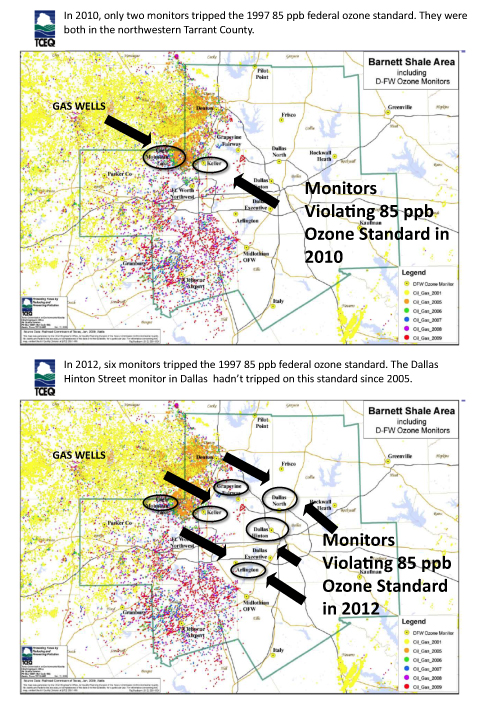 For the second time in four years a state-designed clean air plan to bring safe and legal air to DFW residents has failed, missing its goal by an even wider margin than on its first try, and leaving local air quality worse than when it started.
For the second time in four years a state-designed clean air plan to bring safe and legal air to DFW residents has failed, missing its goal by an even wider margin than on its first try, and leaving local air quality worse than when it started.
November 1st marked the official end of the eight-month 2012 ozone season. According to the Texas Commission on Environmental Quality, or TCEQ, its plan was supposed to deliver record-breaking clean air to DFW this summer on its way to bringing the region into compliance with the Clean Air Act for the first time in two decades.
Perry’s Politicizing of Science Costs Anti-Cancer Agency its Stars
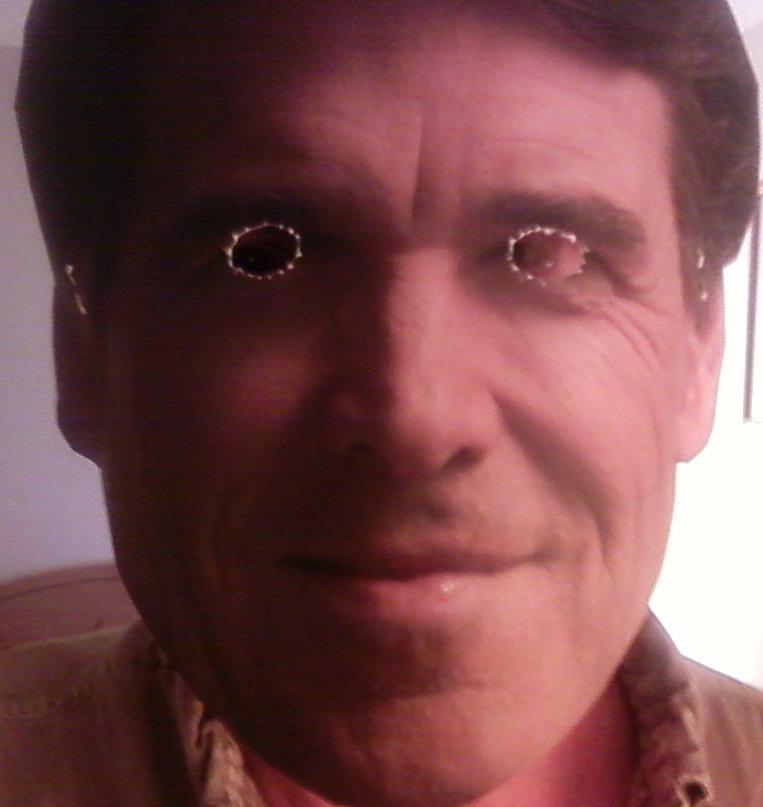 For most of modern history, Texas Governors haven't served more than two four-year terms and most had trouble doing that. Although they might be able to appoint a lot of folks to state agencies, current Governors couldn't re-make the agency into their own private fiefdom because there were too many members who owed their jobs to former Governors, maybe even ones from a different political party, or with different ideas about policy.
For most of modern history, Texas Governors haven't served more than two four-year terms and most had trouble doing that. Although they might be able to appoint a lot of folks to state agencies, current Governors couldn't re-make the agency into their own private fiefdom because there were too many members who owed their jobs to former Governors, maybe even ones from a different political party, or with different ideas about policy.
Rick Perry's never-ending-term has changed that. In office for 12 years and counting, he's managed to use time and the power of appointment to remake just about every executive branch agency the state has. And not just at the top, but deep, deep down into the upper and mid-level echelons of power. Because of the work we do, we see it most obviously with the Texas Commission on Environmental Quality, where Perry's influence reaches down to make sure the Chief Engineer is as ideologically-correct as the politically-appointed Chair. As a result, the Commission's science is harnessed in service to Rick Perry's perpetual campaign goals and is never allowed to contradict them.
But now that same MO seems to have backfired when it comes to superstar anti-cancer researchers who don't need the connections or positions Perry offered them.
Via the New York Times, (how come we haven't heard about this as much from Texas news outlets?) comes word that at least seven more scientists joined their former boss, a Nobel Prize winner, in walking out of Governor Perry's "Cancer Prevention and Research Institute." With $700 million in grant money, only the federal government offered more cash for research projects, so what could have forced such a walk-out?
Apparently, the researchers had the quaint idea that they'd actually be working on ways to, you know, cure cancer. Instead, Perry seems to have wanted the fund to provide another pipeline of money to his cronies in industry by focusing on "commercialization projects" that "focus on turning research into drugs or other products that can be sold rather than financing research itself."
Nobel laureate Dr. Alfred G Gilman resigned in protest last May after the Institute voted to approve such a $20 million dollar commercialization project. Now his colleagues are leaving in droves for the same reason.
"Phillip A. Sharp, another Nobel laureate, was among seven scientists who resigned last week, writing in his resignation letter that the agency’s decisions have carried a “suspicion of favoritism” in how the state is handing out taxpayer dollars.
Brian Dynlacht, another scientist who is leaving, warned that the agency was headed down a path of systematic abuses.
“You may find that it was not worth subverting the entire scientific enterprise — and my understanding was that the intended goal of C.P.R.I.T. was to fund the best cancer research in Texas — on account of this ostensibly new, politically driven, commercialization-based mission,” Dr. Dynlacht wrote in his letter."
Let's just be very clear about this. As long as Rick Perry is Governor, anyone who tells you a Texas state agency is an adequate watchdog for any industry, much less the state's polluters, either has no idea how state government works these days, or knows exactly how it works and is sending you down the proverbial garden path.
The Perry-TCEQ Plan for Cleaner Air: More Coal
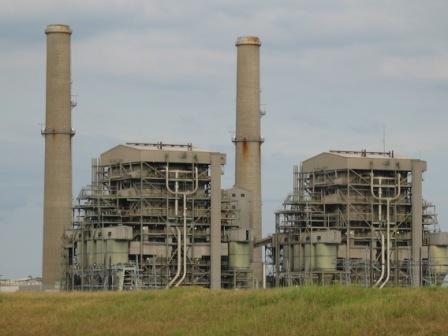 When it rains, it pours, or in this case, spews.
When it rains, it pours, or in this case, spews.
After getting a favorable ruling that struck down the EPA's flexible permit system last week, Team Perry seemingly scored another victory for its friends with Tuesday's ruling against the cross-state pollution rule.
Written by the Obama Administration to replace a similar Bush Administration rule that also got struck down by the courts (but is now back in at least partial effect…it hurts to think about this sometimes), the cross-state pollution rule was an attempt to federalize the problem of continental air pollution, much of it caused by big ol' dirty coal plants like the ones in East and Central Texas.
Texas can't regulate the coal plant pollution that wafts in from Illinois or Kentucky. Likewise, New York can't regulate Ohio facilities that send air pollution over its state lines. A federal solution covering all 50 states is required. Tuesday's ruling agreed, but concluded EPA hadn't given Texas and other states more time to come up with their own strategies to cut air pollution from coal plants. Maybe EPA was influenced by the fact that at the same time this strategy was being proposed, Governor Perry was rolling out plans to help streamline the permitting of 17 new coal plants in Texas.
Neither one of these rulings is as dreadful as it might seem at first. Both can be appealed. And both have mitigating circumstances that cushion the blow. With the flex permit case, all the facilities in Texas got standard operating permits eventually, making the ruling on the flex program itself moot. With the cross-state pollution rules, the Obama EPA itself said that two-thirds of all the health benefits from the rules had already been achieved with the partial implementation of the Bush rules they were meant to replace.
However, the cross state rules were not only supposed to be good in their own right, they also are the underpinning for a couple of other national pollution initiatives, including helping communities meet the new Ozone standard of 75 parts per billion, and the new, lower Particulate Matter pollution standard. Without the rules, these standards will be harder to achieve. And guess who's own plans begin to get mucked up by that failure? You guessed it, the state of Texas.
Because in the case of DFW's chronic smog problem, the Texas Commission on Environmental Quality had already factored compliance with the rule into its already obsolete 2012 clean air plan for the Metromess. That was one of the reasons we were going to see the lowest ozone levels ever recorded in DFW this summer. Without that backstop, it's going to be hard not only to just meet the old 1997 ozone standard of 85 ppb – something DFW has yet to do despite two official tries now over the last seven years – it's going to be hard to meet the much lower standard of 75 ppb.
If you've seen the TCEQ propaganda of the last couple of years, it touts how much pollution totals in Texas have decreased. The Commission uses these numbers to then promote the Perry Team philosophy of limited government intervention, suggesting that it's the TCEQ and Perry responsible for those declines. They are not. For the most part, what the state is touting are the results of federal programs that have decreased pollution systematically across the country – everything from new fuel and pollution standards for cars and trucks, to new federal standards for specific industries, like refineries and chemical plants. Throw in the things that federal citizen suits and pressure got done despite TCEQ – think cement plant pollution reduction in DFW for example – and you have most, if not all of the things reducing pollution in Texas that TCEQ is claiming credit for.
Without the cross state pollution rules, the oldest and dirtiest coal plants in Texas will continue to operate for the foreseeable future. And when the wind blows, some of their pollution will be breathed-in by DFW residents. In the short term, this is Team Perry's trophy for all you hard-working Texas residents – more crap in your lungs.
If the state keeps clearing away all the federal programs that have actually reduced pollution over the last 20-30 years, those total pollution numbers won't be going down much longer. They'll be holding even and then going up. Left to their own devices, Team Perry would have us living in a polluter's Pottersville. And then who will the Governor blame?
Wasting No Time, Texas Rushes To Apply Health Care Ruling to EPA “Mandates”
 A huge national law firm that the State of Texas has hired to represent it in various facets of its anti-EPA jihad has taken the rhetoric of the recent Supreme Court decision and is now attempting to apply it to federal environmental mandates.
A huge national law firm that the State of Texas has hired to represent it in various facets of its anti-EPA jihad has taken the rhetoric of the recent Supreme Court decision and is now attempting to apply it to federal environmental mandates.
According to an Energy and Environment article from last week,
"The focus for now is on part of the health care decision in which the court held, on a 7-2 vote, that the federal government cannot take away all of a state's Medicaid funding if it declines to implement new provisions that were introduced under the reform law. The court saw such a move as akin to coercion.
Congress cannot "penalize states that choose not to participate in that new program by taking away their existing Medicaid funding," Chief Justice John Roberts wrote in the majority opinion.
Lawyers at the Baker Hostetler law firm, which represents Texas, were clearly paying attention to the academic debate that immediately broke out, in which some scholars saw similarities between the Medicaid provisions in the health care law and how the federal government interacts with states over their role in enforcing the Clean Air Act via state implementation plans, known as SIPs."
Most legal scholars don't believe this will go anywhere, but this move is just more evidence that Governor Perry and Co. are still fighting the Civil War all over again.
Dr. Al Breaks His Silence
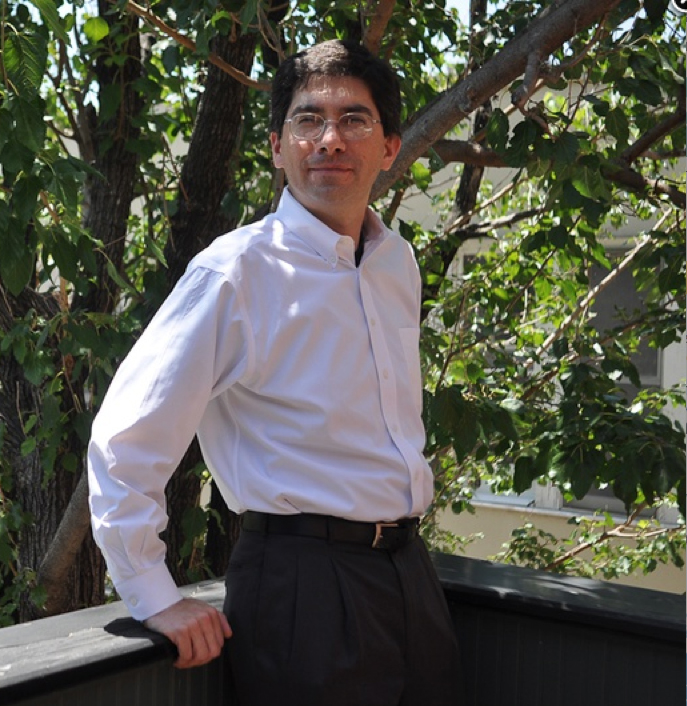 After over three months of not saying much about the circumstances of his resignation as EPA Region 6 Administrator, Dr. Al Armendariz used the online Texas Tribune for his coming-out this last week. He's joined the Sierra Club's Beyond Coal campaign as its southwest director.
After over three months of not saying much about the circumstances of his resignation as EPA Region 6 Administrator, Dr. Al Armendariz used the online Texas Tribune for his coming-out this last week. He's joined the Sierra Club's Beyond Coal campaign as its southwest director.
"I have a small handful of objectives. The first is to stop the construction of any new coal plants in Texas. And also to stop the expansion of any additional coal exports from Texas ports [to] overseas. The second objective is to work on the transition … to clean renewable sources of energy. And the third objective is to work really with all of the stakeholders in the state to further the development of renewable sources of energy, like wind and solar and geothermal."
Exposure to Phthalates (Plastics) Linked to Diabetes in Women
 Just last week we mentioned that one of the chemicals to look out for in burning plastics was phthalates – a class of widely-used chemicals that make plastic more plastic, i.e. more flexible. Phthalates are used in perfumes, cosmetics, and lots of household items made with Polyvinyl Chloride. This is how the stuff ends up in garbage, and how it can end up in your lungs when that garbage is burned at a cement kiln or power plant as "fuel" in the name of "recycling."
Just last week we mentioned that one of the chemicals to look out for in burning plastics was phthalates – a class of widely-used chemicals that make plastic more plastic, i.e. more flexible. Phthalates are used in perfumes, cosmetics, and lots of household items made with Polyvinyl Chloride. This is how the stuff ends up in garbage, and how it can end up in your lungs when that garbage is burned at a cement kiln or power plant as "fuel" in the name of "recycling."
This isn't a theoretical problem. When Midlothian area residents began collecting their own air samples downwind of the local hazardous-waste burning cement plants in the 1990's, they often found significant levels of phthalates.
From past research we know that exposure to phthalates in the womb can disrupt male hormones and have a range of health effects including feminizing male genitalia and reduced IQ.
And guess what? Ellis County rates of Hypospadias (a congenital birth defect in which the opening of the urethra is on the underside, rather than at the end, of the penis. are almost twice as high as for the state a a whole.
This week comes the news that Harvard scientists have linked phthalates to diabetes among women, and particularly to women of color in the Latino and Black communities who experienced the most exposure. Among these populations the risk of diabetes was double. The researchers cautioned that they don't yet know if phthalates actually cause the disease, but they seemed sure of an association.
“It’s extremely likely that phthalates and other chemical contaminants will turn out to be a big part of the obesity and diabetes epidemic, but at this point we really don't know how these chemicals are interacting with each other, or with the human body.”
Diabetes, an endocrine disease marked by problems with insulin production or insulin resistance, affects nearly 26 million Americans, or 11 percent of the population older than 20, according to CDC data. People of color already suffer disproportionally from the disease. According to the Centers for Disease Control, blacks have a diabetes rate 77 percent higher than that of whites, while Latinos have a 66 percent higher rate.
The Harvard study is at least the third in in two years to link phthalates to diabetes in women or adults in general.
“With phthalates, the story is really still emerging,” said Kristina Thayer, a researcher with the National Institute of Environmental Health Sciences and the National Toxicology Program. “Studies like these are considered exploratory, but they seem to be consistent.” “More needs to be done to really fill in this question of potential causality, and the roles that specific phthalates may play,” she added.
But don't expect the Chemical industry, EPA, or the Texas Commission on Environmental Quality to be concerned about this lack of information on the health effects of phthalates exposure. Don't expect them to postpone decisions about burning garbage for fuel because of these gaps in knowledge. Allowing things to happen without fully accounting for all of their hazards is just another day at the office for them. If you want these things to happen, you're going to have to Do-It-Yourself.

